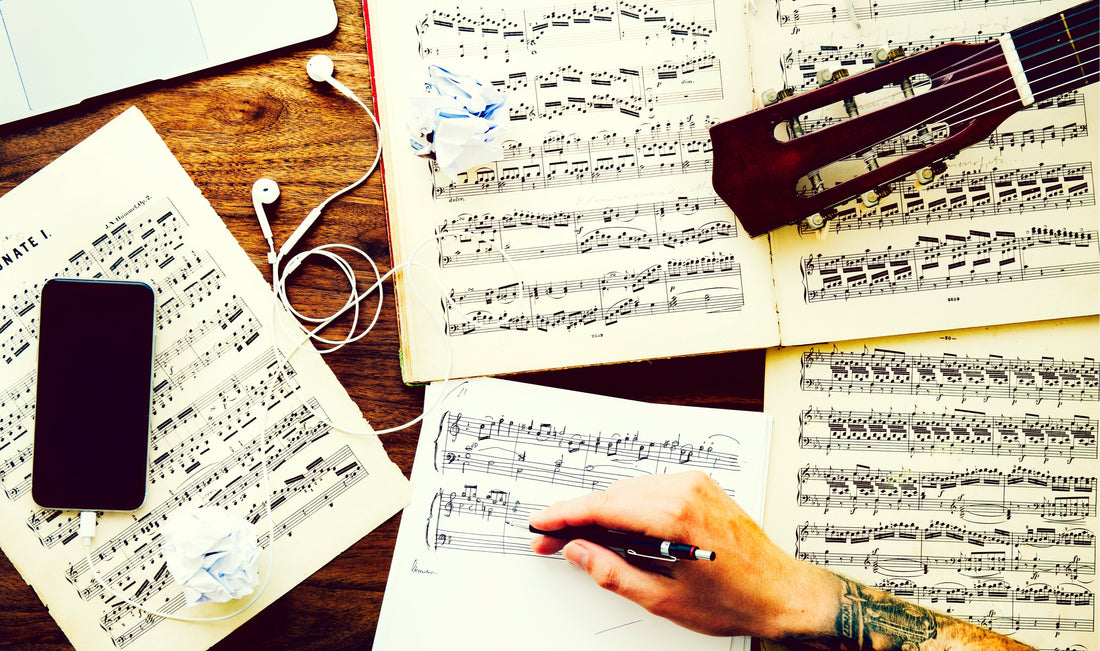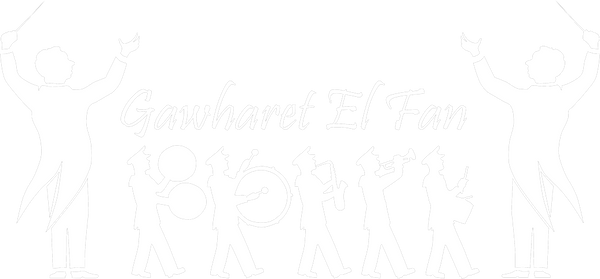
What Exactly are Drum Tabs?
Share
Drum tabs are simplified ways for drummers and other percussionists to read and notate different rhythms. They replace traditional sheet music for many drummers who want to start playing and practicing but have not gotten to the point in their studies where they have learnt how to read musical scores with ease.
It's essential to take your time reading the following information to make sure that you understand precisely what a drum tab is and how it's supposed to be read. This will make it much easier for you to read the rhythms that we'll cover later on.
Counting beats
An important part of understanding drum tabs is learning to count beats. If we were learning proper musical theory and reading from sheet music, we would start this section with an understanding of time signatures but we don’t need to with drum tabs. Instead, drum tabs simplify this for us by allowing us to use beat cycles to just count beats to help us determine the length of which we use rhythm. This is much less complicated and makes it easier to discern lengths of the rhythm.
A beat cycle is the repetition of a specified number of beats. For example, the number of beats in a 4-beat cycle is… 4! So, to count out a 4-beat cycle, we just say:
1, 2, 3, 4, 1, 2, 3, 4, 1, 2, 3, 4, 1, 2… etc. Simple!
Let’s look at how this looks on a drum tab:

Let’s look at a few more examples:

Rhythmic emphasis (Iqa’)
There is another vital element of a drum tab, specific to Arabic Music. This is referred to as the Iqa', or rhythmic emphasis. We will refer to this as rhythmic emphasis in this article, however, note that the word Iqa’ will be commonly used by most experienced Darbuka players. Please carefully read this section, as it is critical to your Darbuka success.
Rhythmic emphasis is used in most forms of music; it helps us understand where the points of emphasis are in the rhythm and to understand the rhythm better. We will look at examples of where this is essential. However, there is a critical concept for Arabic Music that must be understood to read drumming tabs properly.
An Arabic rhythm is defined by its ruh’ (soul), not it’s notation.
This is especially the case in non-percussive rhythms, like Arabic Maqamat (scales), where there are noticeable tonal variations between what's written on the sheet and what's played in real life. In drum rhythms, the concept of ruh’ is used. However, it is used to define what notes of the rhythm constitute the “core rhythm”, to allow for good ornamentation, this link will take you to one of our previous blog posts which describes what Darbuka Ornamentation is:
What Exactly is Darbuka Ornamentation?
Let’s look at the below rhythm, the Heavy Sa’idi:

This rhythm is 4-beat rhythm, as we can see (there are only four beats in the second row).
However, there are 5 points of rhythmic emphasis in the rhythm (there are 4 Doum notes and 1 Tek note).
For this rhythm to be the Heavy Sa'idi in practice, these Doum and Tek notes need to hit exactly where they are supposed to hit; otherwise, the Ruh’ will be lost. If the Ruh’ is lost, we lose our rhythm. The location of these five beats is known as the rhythmic emphasis.
Multiple notes within each beat
The only problem is, there seems to be space for four gaps underneath each beat! Take a look at the 1st beat of Heavy Sa’idi for example:

Within the first beat of this rhythm, we have space for four notes. At the moment, two of them are filled with Doum notes, and two of them are empty. Let’s look at how this works.
To help us notate what notes we are going to play within each beat, we can split every beat into several different notes. For the sake of simplicity, we have divided all of the beats we will cover into four notes. This means that within each beat, four possible notes can be played. We can count this as follows:
If counting just the 4-beat cycle, we can count as follows:
1, 2, 3, 4, 1, 2, 3, 4, etc.
If counting the 4-beat cycle, including the four parts of each beat, we can count as follows:
1, e, &, a, 2, e, &, a, 3, e, &, a, 4, e, &, a, 1, e, &, a, 2, e, &, a, 3, e, &, a, 4, e, &, a, etc.
This will be difficult to get your head around initially. To understand this better, try saying the above count-cycle in time with a clock. At every second, you should be saying a number. Between each number, you should be saying “e & a”. Remember to repeat after every four counts! You can check out the Darbuka Mastery Program on the Gawharet El Fan website to see me demonstrating this in action.
If you're struggling with what rhythm to play, read our article on "How To Choose The Perfect Darbuka Rhythm To Play".
Join our family
We pride ourselves in offering everything you could possibly need in diving into the world of Arabic music, be it instruments or knowledge. Look no further than our store for a diverse assortment of Arab instruments! Or if it's expertise you seek... check out our Darbuka Mastery Program!
We would be honoured for you to share our passion. Read into Our History, or perhaps discover how our products are made through our Innovation page. Once you've sated your appetite, invite others to join the family too through our social media buttons below! Also, subscribe to our mailing list to keep up with all of the latest goings-on here at Gawharet El Fan!


